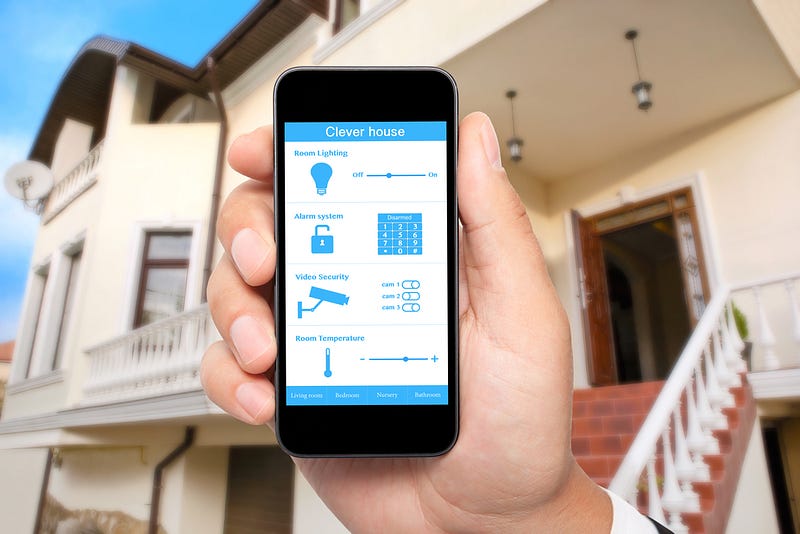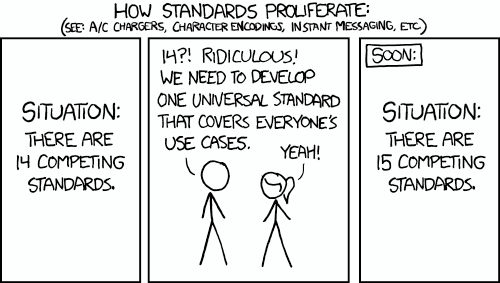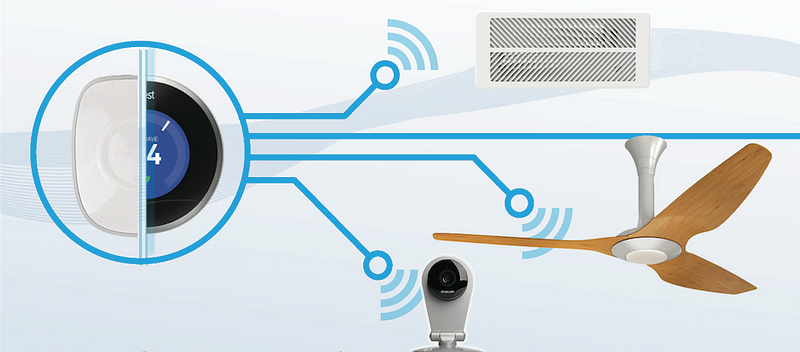
Last week, we gave you a crash course on the smart bridge and explained why it’s an essential part of the smart home. Now, we want to explain why we built our own smart bridge and why we decided early on to not build a new smart home standard, but to instead integrate with platforms homeowners already have.
Too Many Platforms
It seems like every week a new company is building software and hardware that will simplify the Internet of Things and bring thousands of connected devices into a single, unified platform. While on the surface this seems consumer-friendly, you might begin to question this assumption if you dig a bit deeper. With a proliferation of platforms comes an increasingly confusing landscape of products, software, and services for the smart home. Platforms such as Wink and SmartThings have done a great job connecting hundreds of smart devices together into a single app and hub, but they are just two of dozens of platforms offering a varying number of integrations with wildly different levels of quality and reliability.

There is no shortage of platforms out there. Nest has “Works With Nest”; Vera connects with 200+ products through their various hubs; Lowe's has IRIS; Logitech has their Harmony Hub; and Lutron has their own smart bridge. Apple recently entered the race with HomeKit and the first HomeKit-enabled products from device manufacturers, ranging from Ecobee to Kwikset. While choice is usually a good thing, when it comes to deciding what smart devices are right for your home, this much choice can be dizzying.
While choice is usually a good thing, when it comes to deciding what smart devices are right for your home, this much choice can be dizzying.
We don’t think this is the right approach. There are elements of every platform that can be improved, but reinventing the wheel just to make incremental changes is counter-productive. Even if the goal is consolidation and simplicity for users, more often than not, inventing an entirely new platform does the opposite. Homeowners want to know that no matter which platform they choose, their options for individual devices will not vary too much across them.
This XKCD comic summarizes our feelings on the subject:

A Different Approach
Rather than invent a new platform into which other companies’ have to integrate their devices, we decided early on to prioritize integrating our products into platforms homeowners already have. We’re big believers in meeting homeowners where they are; if a homeowner has Wink, we want to integrate with Wink so he or she can enjoy Smart Vents. The same applies if they have SmartThings, Lowes Iris, HomeKit, Nest, or any other platform.
At this point you may be wondering what the purpose of the Keen Home Smart Bridge is if not to act as a hub for multiple devices in a home. We built it out of necessity for homeowners who don’t have a smart home platform, but still want to install Smart Vents in their homes. In fact, we almost didn’t make our own bridge. We believe so strongly in not forcing homeowners to adopt a new standard that we originally planned to launch the Smart Vent as a purely integrated solution with our partners SmartThings and Lowe's Iris.
We believe so strongly in not forcing homeowners to adopt a new standard that we originally planned to launch the Smart Vent as a purely integrated solution with our partners SmartThings and Lowe's Iris.
Ultimately, we determined that a lot of demand for the Smart Vent was coming from consumers who didn’t have a smart home platform at all. To better service our community and to create the best possible experience for all potential Smart Vent users, we decided that the best course of action was to build our own app and bridge in addition to integrating with partners. So if homeowners just want Smart Vents, they’ll have an amazing Keen Home branded experience. If they have SmartThings, Lowe's IRIS, or Nest, Smart Vents will work with these platforms right out of the box.
Going Forward
We have three great partners, but we’re not stopping there. Integrations are a priority for us and we will be introducing additional integrations in the coming months. This is not just a fundamental business strategy for Keen Home. It is key for us — and any other smart home company for that matter — to truly meet the needs of homeowners.

In order for homes to truly become smart, the myriad of devices in them first need to work together. Current smart home platforms have started to make this possible, but the sheer number of those platforms and the inconsistencies in the devices they support inevitably means that homeowners will continue to have a fractured experience. Device manufacturers should start prioritizing integrations instead of adding to the flood of new omni-platforms already on the market. We for one, want to make sure every homeowner can enjoy the benefits of Smart Vents, regardless of what platform they have. Choosing not to invent an entirely new platform standard makes this possible, and allows us to better serve the homeowner. We’re confident that this is the smartest approach for us and a great strategy for the smart home industry.